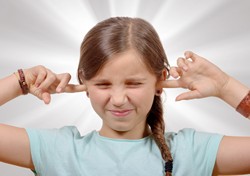Measure of distraction
Attention means the ability to select relevant information in the environment, and involves a balance between top-down (voluntary) and bottom-up (involuntary) mechanisms. Top-down attention enables the good performance of an on-going task by selecting the relevant information. One’s attention can also be involuntarily captured by an unexpected salient stimulus and thus diverted from the previously on-going task. This bottom-up form of attention is necessary to be aware of potentially important (but irrelevant to the on-going task) event (e.g. fire alarm), and is commonly referred as distractibility. Dominance of bottom-up processes indicates a tendency to distractibility, yet current clinical tests neglect changes in such processes. The EU-funded DISTRACTIBILITY (Competition between bottom-up and top-down mechanisms of auditory attention: Neurophysiological and physiopathological mechanisms of distractibility) project developed a new assessment. The research also addressed how the two brain mechanisms work together in a healthy or pathological brain. Work consisted of four main studies. Results from the first showed that increasing top-down attention failed to reduce distractibility, whereas distracting sounds disturbed top-down mechanisms by lengthening target processing and detection. Moreover, the study showed that those who frequently recall dreams benefit from enhanced capacity in both types of processes. A second study examined intracortical electrophysiological data of epileptic patients with implanted electrodes. Results indicated that top-down attention modulated both sustained and oscillatory brain responses within the auditory cortices. Scalp EEG data from patients with damaged lateral prefrontal cortex indicated a role for this part of the brain in regulating both attentional processes. Damage to the region reduced top-down attention, and enhanced bottom-up mechanisms, leading to increased distractibility. Finally, a behavioural study determined the attentional capacities of patients with schizophrenia or bipolar disorder. Both types of patients maintained a balance between top-down and bottom-up processes. However, bipolar patients suffered from reduced cognitive resources that affected mental performance during high task load. Researchers proposed a new paradigm for estimating the distraction effect of unexpected sounds. The resulting test helped determine the balance between the two studied types of brain processes. The lateral prefrontal cortex was shown to control both types of attention and to affect attentional balance. The results of DISTRACTIBILITY constitute an effective tool to measure attentional mechanisms in the brain, and to provide an index of distractibility. The work has clinical applications and may help affected individuals by specifying the origin of their distractibility.







